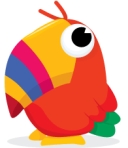 Networking events are strange places for those who are new at it. It often takes awhile to identify the different types of people that are gathered together. To aid the newly initiated, here is a Field Guild to help you identify the different types of networking birds you will encounter. Some are malicious, others are quite harmless. Most of them, however, are very good birds and can help you in developing your business.
Networking events are strange places for those who are new at it. It often takes awhile to identify the different types of people that are gathered together. To aid the newly initiated, here is a Field Guild to help you identify the different types of networking birds you will encounter. Some are malicious, others are quite harmless. Most of them, however, are very good birds and can help you in developing your business.
The pursuit of bird watching at a networking event is not a worthwhile hobby in and of itself. However, the serious networker should be aware of the various birds that are flying around, in order to avoid contact with certain species while engaging in good business networking with others.
Red Winged Me-Warbler – This Networking bird is easy to spot by its special call – “I-Me-My…I-Me-My.” Normally, this bird is found circling the outer edges of a networking event sporting business-formal plumage extending its large hands filled with business cards. The species does not care to know its prey by name and rarely listens. It prefers to keep calling out, listing its capabilities, services, and opportunities.
Low Flying Nut Muncher – This bird is normally located near the food area of any event. They are normally quiet birds except for the sound of munching from the large plate of food they carry constantly. Networking specialists are not sure how these birds seem to know which events have the best snack trays. No one has actually seen this species network; they merely eat and run.
Bar Bellied Slush – A distant cousin of the Nut Muncher, the Slush lives close to the bar, particularly at catered events. This species is able to consume large amounts of liquid without inhibiting its ability to fly and maneuver. Normally a colorful and interesting bird to encounter at networking events, it cares deeply about the work another networking bird does and is sincerely interested in following up at a later time. The Slush, unfortunately, has chronic short-term memory that causes it to forget any contacts made at an event within 12 hours of the meeting.
Gold Crested Highlighter – Both the male and the female of this species have unquestionably beautiful plumage. When entering an event, they immediately become the focal point of the gathering. Their calls are sweet and enticing, drawing other birds quickly around them.
There are actually two different classes of this species; one is poisonous while the other is not. The non-poisonous variety is very helpful to an event and can make networking a pleasurable experience. Beware the lure of the poisonous Highlighter as you can end up in trouble later.
Tufted Guest-Helper – This networking bird is a benefit to the environment. It is constantly hovering around a crowd, looking for opportunities to turn strangers into friends. This bird will not allow guests to be alone at an event and works hard to connect them to others. Networking planners are thrilled when one of these birds arrives.
Silver Throated Networker – This is the most common bird found at many networking events. This bird can be approached without concern as it only wants the best for others. Normally, this species listens to other calls before it calls out itself. It is good for the environment and gives back more than it gets.
Winged Hoster – A necessary bird at every gathering, the Winged Hoster can be mistaken for its cousin, the Green Billed Hoster. While the Green Billed Hoster is the one actually sponsoring a networking event, the Winged Hoster is a friendly bird that flies feverishly around the room, making sure everyone is connecting. The species is easily identified by the business card holder that is carried everywhere for the purpose of giving leads and referrals to everyone in site.
Wingless Hoster – Similar to the Winged Hoster, this bird stays in one place and never flies. The smile of this species is especially dazzling, luring many to come and talk. Like the winged variety, this bird is very helpful in making connections.
Slow Footed Hesitator – Normally, this networking bird stays close to an event entrance and rarely makes a move on its own. A naturally shy species, the Hesitator will not survive an event unless protected and encouraged by a Tufted Guest-helper or a variety of Hoster. Often, this bird is a friendly and very interesting bird when placed in a safe environment.
Empty Pledging Crowd Pleaser – Other birds are made to feel good whenever this bird cries out to them and you can pick out this networker by its distinctive call – “Your exactly what I’ve been looking for; so, let’s get together very soon!” More experienced network watchers can easily spot this bird. Further study has shown that the call of the Crowd Pleaser is actually a different language that means, “I really have no interest in doing business with you, but you may be able to help me.”
These are just a few birds that you can encounter while networking. Others are in the process of still being identified. You may also recognize many of these species from their appearances at conferences and other gatherings. Most are not limited to networking climates alone.
